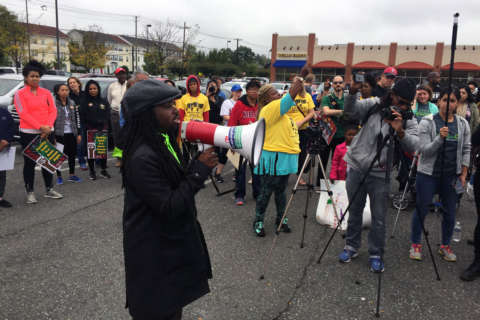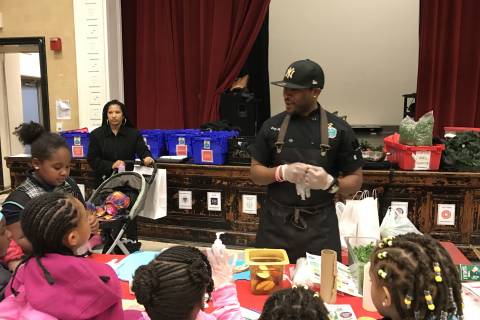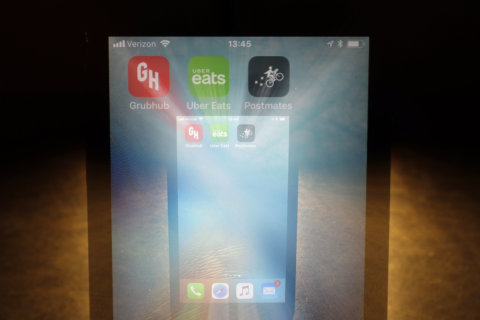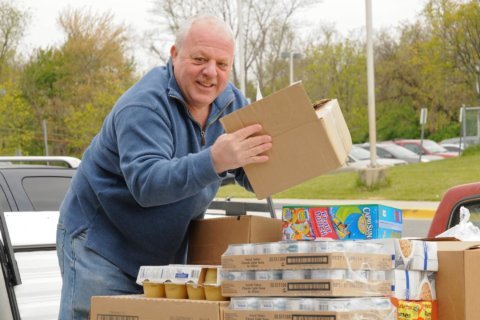WASHINGTON — Washingtonians who wander into Giant Food stores this year will see a familiar face — or three — in the produce section.
Next to bins of apples, oranges and tomatoes are posters of Washington Wizards shooting guard Bradley Beal, Washington Mystics forward Elena Delle Donne and Washington Capitals right winger T.J. Oshie — all encouraging shoppers to opt for fruits and vegetables.
The push is part of a community-targeted effort from FNV (which stands for “fruits and veggies”), a national campaign from Partnership for Healthier America that enlists healthy eating endorsements from celebrities and athletes, including Kristen Bell, Cam Newton, Jessica Alba and Nick Jonas.
“We need to cut through the noise, so we’re bringing the power of marketing and celebrity endorsements to compete with junk food marketing and make healthier options just as appealing,” said Blythe Thomas, chief marketing officer at Partnership for Healthier America, the organization behind FNV.
More than 13 million children and adolescents in the U.S. are obese, according to the Centers for Disease Control and Prevention. In addition to unhealthy choices, sedentary behavior and restricted access to nutritious food, health professionals point to marketing as a source of the growing epidemic.
A 2007 report from Kaiser Family Foundation found that children ages 2 to 17 see between 4,427 and 6,098 advertisements for food per year on TV. Of those ads, 34 percent are for candy and snacks, 28 percent are for cereal and 10 percent are for fast food. The American Psychological Association said food and beverage advertising targeted at children “influences their product preferences, requests and diets.”
A more recent report from the Rudd Center for Food Policy and Obesity shows that food companies almost exclusively target black and Hispanic consumers, who have higher rates of obesity than non-Hispanic whites, with marketing for fast food, candy, sugary drinks and snacks.
“There is a growing disparity between what white youth and minority youth see on TV. Junk food comprised 86 percent of ad spending on black-targeted programming, and 82 percent of spending on Spanish language television in 2017,” Thomas said.
Partnership for Healthier America is hoping a few ads featuring hometown heroes will push back against the messages from major food companies.
“And hopefully, a kid sees an icon and said, ‘You know what? They’re eating broccoli, let me try it out too,’” said Daniel Wolk, communications coordinator at Giant Food.
Thomas added, “To be able to get right there in the broccoli aisle, right there where moms and young adults and kids are making choices of what they’re going to bring home, that’s the best place for us to be — to really get them to think a little differently, and maybe just get a little bit excited about trying something different.”
FNV’s D.C.-area campaign will be featured in all 164 Giant Food stores in D.C., Maryland, Virginia and Delaware, including the Giant on Alabama Avenue in Southeast, D.C. — one of three grocery stores that serves the nearly 150,000 Washingtonians who live east of the Anacostia River, where the obesity rate is more than 72 percent, according to the D.C. Department of Health.
Increasing access to healthy foods in D.C.’s food deserts, where residents are disproportionately sicker and poorer than other areas in the nation’s capital, has been a priority for many organizations in recent years. With its Healthy Corners initiative, DC Central Kitchen delivers fresh produce and healthy snacks to corner stores in low-income areas. Martha’s Kitchen hosts pop-up markets at community centers and schools where locals can shop for free produce and pantry stables.
The FNV campaign will run in Giant Food stores for the next six months.








